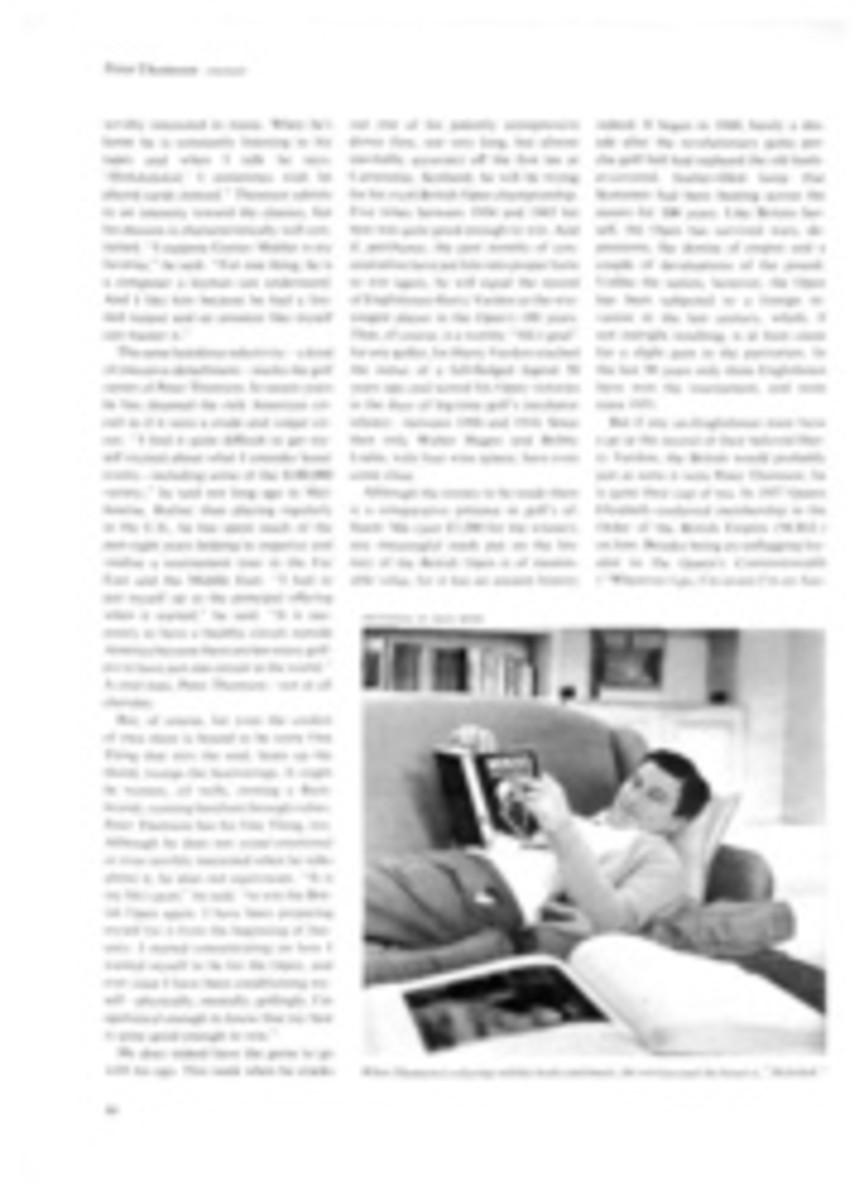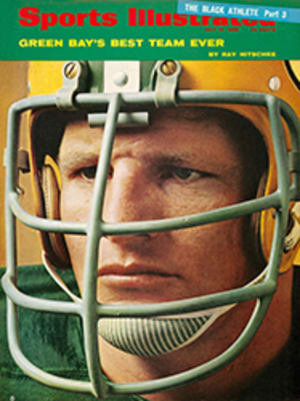
UP AND DOWN BUT SELDOM OUT
The next time the Oakland A's are in town, train a pair of binoculars on their bench. Overlook the ridiculous green-and-gold uniforms that Owner Charles Finley forces his players to wear, if you can, and concentrate on the faces beneath the caps. Not many prospects for a Gillette commercial, are there? Two, maybe three at the most. And do not let those who are chewing tobacco fool you, either. Every time one of those kids with a fat cheek aims a stream at the dugout steps, half of it splatters over his white, kangaroo-leather spikes.
But when the A's take the field, don't laugh. The A's are much better than their costumes; in fact, everybody who has to play them seems to agree that this young, talented ball club is growing up quite fast in spite of Charles Finley. Although basically the same last-place team that Finley moved to Oakland last winter from Kansas City, there is a new manager and a new spirit, both of which have made a difference.
"Before," says Pitcher Jim Nash, "the pitcher went out to work his six innings and then hoped to get out of there without the loss. The hitters just wanted to get their hit a day. Nobody cared if we won or lost. We were playing for ourselves. But now the pitchers are going out to win, and the hitters are after two and three hits a day to help them. We're all trying to do the same thing—win ball games. For the first time since I've been here baseball is fun."
Bob Kennedy, the new manager, has made it that way. Oh, he has his faults—overmanaging, for one. Kennedy, according to people who keep track of such things, has used 75 different lineups in Oakland's first 80 games, and sometimes he reminds you of an insurance man handling his Little League team. Nevertheless, he has restored discipline and respect to a ball club that has lacked both for years. Now the A's are catching signs, taking extra bases and hitting the cutoff man. Once in a while the A's youthful exuberance gets them into trouble, of course. Last week in Boston, for example, Sal Bando, the blocky third baseman, was on first base when a ball was hit into short right field. He ripped past second and was almost to third when the ball was caught. So Bando took off his helmet and tossed it to the third-base coach. Then, suddenly, he remembered: only one man was out. He sailed straight back across the pitcher's mound and reached first base just in time to be doubled up.
A fly ball popped into short right when the A's are in the field is a fly of a different species. It seems to draw four and five bodies where three would be more than sufficient. Arms wave, green hats fly and voices shout. Sometimes somebody catches the ball. One thing is sure: if it drops it is surrounded. "Some of these kids are Double-A players, not more," says Kennedy. "That's the limit of their experience. If we're going to teach them to play, it will have to be in the big leagues. We've got to be patient with them, that's all."
Kennedy was hired last winter, following the stormiest season the A's had yet experienced under Finley. In mid-August, Finley suspended Pitcher Lew Krausse for alleged misconduct on a flight from Boston to Kansas City. Then Finley fired Manager Alvin Dark after an embarrassing session in Washington's Shoreham Hotel. Later he gave Ken Harrelson his unconditional release for talking too much in the papers. Harrelson signed with the Red Sox for a $75,000 bonus, played in the World Series and now leads the American League with a .314 average. The A's would love to have him back.
At the end of the season practically every player on the team, perhaps thinking of Harrelson, had demanded to be traded. This spring, however, they reported dutifully to Bradenton, Fla. with a new outlook. Krausse, after working part of the winter on the docks in Chester, Pa., decided that toiling for Finley couldn't be all that bad. He got in touch with the owner himself and was the first player to sign. Jack Aker, a relief pitcher who had vowed at the end of the season that he would never play for Finley again, decided he couldn't afford to quit. Among other things on his mind was the players' pension fund. One by one, their teammates signed.
"The move to Oakland had a lot to do with our attitude," says Krausse. "We all liked Kansas City well enough, but if we'd stayed there the bad stuff would have been hovering over our heads. People would have been waiting for the next explosion."
The only explosion on the A's so far this year was their recent charge into the first division. After a mediocre start—and a lukewarm welcome from their new fans—the A's were in eighth place on May 21, five games under .500. Then they took two out of three from Cleveland, split two with Detroit and won three of four from California, all at home.
"Somewhere in that stretch was the turning point," says Nash. "We got the idea we were every bit as good as the top teams in the league. We felt we belonged in the first division."
On June 29, following a win in the first game of a twi-night doubleheader in New York, the A's were half a game out of second place. They were 29-15 against the top six teams in the league, but 9-19 against the bottom three—New York, Chicago and Washington. Then, in the second game with the Yankees, Mickey Mantle came off the bench in the eighth inning to beat Oakland and the kids took it hard. They lost seven in a row before Chuck Dobson stopped Detroit 4-1 a week later.
Connie Mack would be proud of this A's club—especially of the pitchers. They are all young, smart and they can throw hard. "With other clubs, you get down to the seventh, eighth and ninth pitcher and you are sure to get a good ball to hit now and then," says Harrelson. "But not with Oakland. They've got 10 good pitchers."
Nash is the ace once more, just as he was as a rookie two years ago when he won 12 of 13 and led the American League with a 2.06 earned run average, though his 127 innings didn't qualify for the official championship. Nash is 6'5" tall. He talks slow and throws fast. He fears nobody with a bat in his hands, not even Carl Yastrzemski. Unlike others recently, he pitched to Yaz, struck him out once and held him hitless in four times at bat. Johnny (Blue Moon) Odom, who follows Nash in the rotation, and in ERA, doesn't fear anyone—or anything—either. Odom wears No. 13 and the batters are wary of him because, as they say, he is "just wild enough." Dobson, who won Saturday, the first time any A's pitcher could say that in a week, welcomed the move from Kansas City, his home town. "Really, I had trouble concentrating when I pitched before my family and friends all the time," he said.
Krausse, only 25, is the old man among the starters. He is pitching just as he did in 1966, when he won 14 games. The combined earned run average of the A's top four starters, believe it or not, is a dazzling 2.34. Jim (Catfish) Hunter, the team's best pitcher last year, is off to a slow start. He pitched a perfect game on May 8, but he is 6-7 with a 3.91 ERA. Catfish is only 22. He should improve. Last year the A's starters completed only 26 games; this year they have already finished 26, which has not left much work for Chief (Jack Aker), Bug (Paul Lindblad), Fast Eddie (Ed Sprague) and the rest of the bullpen. Still, everyone except Aker and Ken Sanders has an ERA under 2.17.
The A's speed has a lot to do with the pitchers' records. Rick Monday, the $104,000 centerfielder, Reggie Jackson, the $100,000 rightfielder, and Shortstop Bert Campaneris, the league's leading base stealer, could provide the makings of a pretty good sprint relay team. Only 22, Monday is hitting .299 now, second behind Harrelson. Monday wears No. 7, the star number, which should tell you something. Kennedy gave him the night off in Boston last week, and Monday played six innings.
Jackson, a college teammate of Monday's and Bando's at Arizona State, leads the A's in home runs. Still, his arm draws most of the attention. Last week he threw out two Boston runners at the plate—one from 340 feet, on the fly. A third throw, one that First Baseman Danny Cater cut off at the L in Oakland on his shirt, was strictly for show.
This is a talented, young team and it has spirit. Even during last week's depressing losing streak Nash could detect something affirmative in the way the players bowed their sad heads in front of their lockers. "Nobody can make you sit that way and say nothing," he said. "You've got to feel it. If you don't, it's just like a catcher hollering to his pitcher, 'Blow it by this guy," when he's behind 16-0. That's false hustle." The Oakland A's new hustle is not false.
PHOTO
Bert Campaneris, the old man among the A's speedsters and the league's top base stealer, is out and chagrined after leaning too far off first.
PHOTO
Safe in a swirl of dust and home with a run against Boston is Second Baseman Ted Kubiak, one of the hard-driving new A's who make them go.

